Never Miss An Opportunity Again With Automated Communication written by John Jantsch read more at Duct Tape Marketing
Marketing Podcast with John Jantsch
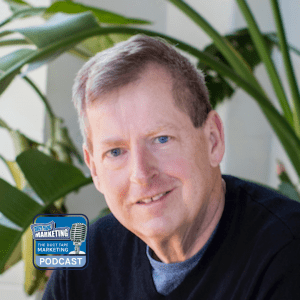
In this episode of the Duct Tape Marketing Podcast, I’m doing a solo show. I’m talking about the many forms and channels of customer communication that exist and the strategies I believe is critical for small businesses to implement today. I share a little bit about a solution I’m working on to help small businesses with unifying their communication channels that way no customer opportunities are missed in the future.
![]()
![]()
Key Takeaway:
There are a million ways to communicate with customers today, and because of that, so many opportunities fall through the cracks. The holy grail of communication is having one unified source to manage your customer communication – and it’s a problem I’m working on creating a solution for which I discuss more in this episode. Join me as I dive into the many ways customers communicate with businesses of all sizes today and how implementing automation in your communication with customers is the key to not letting opportunities slip through the cracks.
Topics I Cover:
- [2:34] Where business owners are missing tons of opportunities today
- [3:27] The holy grail of communication today
- [4:00] How SMS is one of the drivers of change
Resources I Mention:
- Send me a note: john@ducttapemarketing.com
Take The Marketing Assessment:
- Marketingassessment.co
Like this show? Click on over and give us a review on iTunes, please!
John Jantsch (00:00): Today’s episode of the duct tape marketing podcast is brought to you by blissful prospecting, hosted by Jason bay and brought to you by the HubSpot podcast network host Jason bay dives in with leading sales experts and top performing reps to share actionable tips and strategies to help you land more meetings with your ideal clients. Recently, they did a show on the four day work week. I’m a huge fan. I think everybody should be looking towards trying to create that, Hey, we get most of our work done in like two hours every day. Anyway, so let’s try out the four day work week. All right, listen to blissful, prospecting, wherever you get your podcasts.
Hello and welcome to another episode of the duct tape marketing podcast. This is John Jantsch, and I’m doing another solo show today. I wanna talk about communication and business and working with customers and all the other various forms of communication.
People are now chatting into us from our Google business pages. Obviously we get email by the droves. People write reviews and we get notified about those. Facebook messenger is a way that people can get ahold of us. Instagram, DMS, I don’t know WhatsApp
And don’t turn off the
It’s just John at duct tape, marketing.com. Send me a note and we’ll start talking about it. But one of the drivers of this, I think as well is SMS text messaging. Everybody’s got a phone, every single one of those phones is equipped with that functionality. And it’s becoming there’s surveys showing that 50, 60, 70 pan upon the generation, you were born in 60, 70% of folks prefer to communicate via text, especially early on. I mean, if you were trying to close a deal and finalize some things, but if we’re just trying to get information, we’re just trying to say, Hey, I have an interest in getting X or I wanna schedule appointment for X text. Is it? I mean like it or not, there’s still some people that don’t think it has a place in business, but like it or not, it is a huge driver today of communication.
And if you are not using that functionality, that technology as a part of your overall communication or overall customer journey, you are missing tons and tons of opportunity. In fact, I would suggest there’s some buyers out there that are, that are just gonna say, oh, you don’t have text. I’m not gonna do business with you. I can’t schedule automatically. I’m not gonna do business with you. That’s just where we are. So rather than fight it,
In fact it might be negative. So then version two became the bots. Everybody loves those, right?
Now, today, what I think the, what we wanna be doing is if you think about this idea of text or SMS, being the huge driver of the hub of communication, what about having taken that chat bubble and driving people to a text conversation? So now first off you’re getting, you’re capturing that information. You’re starting a conversation and theoretically, anybody in your organization, walking around with the app that, that has that info coming to it can respond. I’m not saying that they necessarily have to sit there and respond, but you know, you imagine you have a technician out in the field that, that, you know, instead of being there, sitting in front of a desktop on a computer, wait, waiting for people on your website, they’re able to respond through that. I already mentioned Google business profile. Google is very well. I was gonna say very smart.
They’re not necessarily innovative
Here’s a, another functionality that can be built into this idea. I wonder how many phone calls you miss because you’re on the phone or because it’s after hours or because whoever was supposed to be answering the phone, didn’t get to it. Now, maybe the phone’s equipped with a voicemail and so great. You captured it there, but now that person has to go and listen. And you know, maybe it’s a insurance pitch or better yet an SEO person that wants to sell you services. So you still got all that time invested. Imagine if you had the functionality and I’m not saying you never answer the phone, but imagine if you had the functionality that every time a call was missed and not picked up, that person got an immediate text back. Not everybody calls on a mobile device, but I don’t know, probably 90% do so they immediately get a text back and it says, Hey, I saw we missed your call.
What can we help you with now, if it’s that person selling SEO services? Well, they’re probably not gonna respond, but if it’s a customer, especially a customer who would actually prefer
But I think every small business should have that ability now reviews. So you go, you do the work you’re done. What if you just had to press one button in that app that we’re talking about? And all of a sudden the person gets a text that says, we love reviews. We’re so happy that we did business. You please review us here, automate the process of that. And then when that person did review right there in your unified communication platform, you’d have the ability to respond to that review a Facebook review or a Google review. So this technology is all there now, and I’m not selling G whiz technology. I’m selling the fact that I think you’re missing. Most people are missing massive amounts of opportunities because they haven’t automated this because it’s hard to go find all the places people are leaving clues. It’s, there’s no question that if somebody gets followed up with in five, 10 minutes in maybe one or two different ways, they’re far more likely to convert.
We’re all busy. Life is inconvenient. Sometimes, especially getting stuff done
If you’re not using that technology for that, you are missing the boat. As I said, this is such an important thing. We’re building it. We’re building this engine that will allow you to have that beautiful unified communication place will allow you to have the app that, that you or whoever all of your team can carry around. And the person who, who needs to reply can reply. But I think that’s a place where we’re at today. That software has to be installed in small businesses today. Every small business, I don’t care what industry you’re in. All right, that’s it for today. Please hit me up, John, at duct tape marketing. If you wanna hear more about this unified communication, beautiful way to run your business, take care out there, and hopefully we’ll run into you one of these days out there on the road. Hey, and one final thing before you go, you know how I talk about marketing strategy strategy before tactics? Well, sometimes it can be hard to understand where you stand in that what needs to be done with regard to creating a marketing strategy. So we created a free tool for you. It’s called the marketing strategy assessment. You can find it@marketingassessment.co not.com.co check out our free marketing assessment and learn where you are with your strategy today. That’s just marketing assessment.co I’d. Love to chat with you about the results that you get.
Sign up to receive email updates
Enter your name and email address below and I’ll send you periodic updates about the podcast.
This Duct Tape Marketing Podcast episode is brought to you by the HubSpot Podcast Network and Semrush.
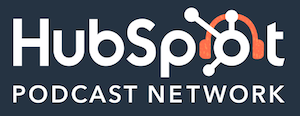
HubSpot Podcast Network is the audio destination for business professionals seeking the best education and inspiration to grow a business.
![]() Running a small business means doing it all. You deserve an online marketing platform that does the same! Semrush is an all-in-one platform that will lighten the load. Handle SEO, social media, and advertising all in one place. Attract new customers, save time and money on marketing, and get ahead of the competition. New to online marketing? No problem! Semrush will get you started. If you’re ready to grow online, try Semrush free today at semrush.com/now.
Running a small business means doing it all. You deserve an online marketing platform that does the same! Semrush is an all-in-one platform that will lighten the load. Handle SEO, social media, and advertising all in one place. Attract new customers, save time and money on marketing, and get ahead of the competition. New to online marketing? No problem! Semrush will get you started. If you’re ready to grow online, try Semrush free today at semrush.com/now.
Did you miss our previous article…
https://www.sydneysocialmediaservices.com/?p=2160

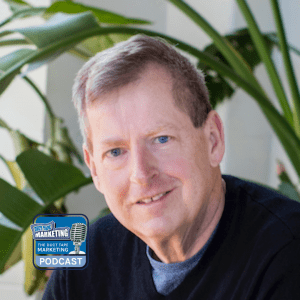 In this episode of the Duct Tape Marketing
In this episode of the Duct Tape Marketing 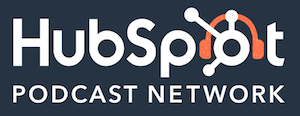
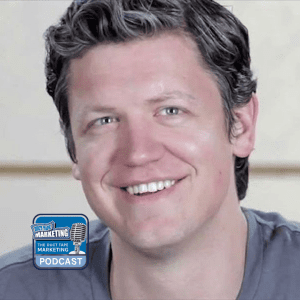 In this episode of the Duct Tape Marketing Podcast, I interview Brent Weaver. Brent is on a mission to help 10,000 digital agency owners achieve freedom in business and life by helping them own their market. Brent is the founder and CEO of uGurus, a business training, and education company dedicated to this mission. He also hosts one of the leading podcasts in the business niche—The Digital Agency Show and is the author of Get Rich in the Deep End: Commit to Your Niche, Own Your Market, and Audaciously Scale Your Agency.
In this episode of the Duct Tape Marketing Podcast, I interview Brent Weaver. Brent is on a mission to help 10,000 digital agency owners achieve freedom in business and life by helping them own their market. Brent is the founder and CEO of uGurus, a business training, and education company dedicated to this mission. He also hosts one of the leading podcasts in the business niche—The Digital Agency Show and is the author of Get Rich in the Deep End: Commit to Your Niche, Own Your Market, and Audaciously Scale Your Agency.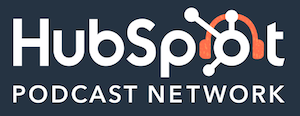
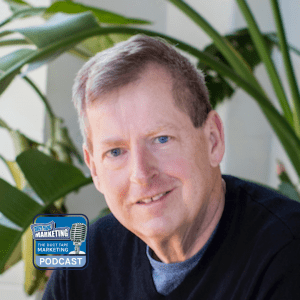 In this episode of the Duct Tape Marketing Podcast, I’m doing a solo show, and I’m gonna talk about the topic of analytics — specifically tracking results, either for your own business or for clients that you may work with.
In this episode of the Duct Tape Marketing Podcast, I’m doing a solo show, and I’m gonna talk about the topic of analytics — specifically tracking results, either for your own business or for clients that you may work with.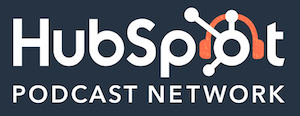
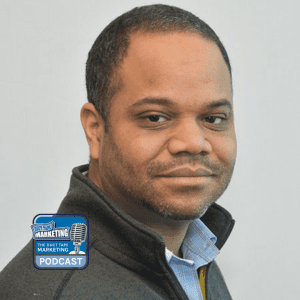 In this episode of the Duct Tape Marketing Podcast, I interview Dale Bertrand. Dale has been an SEO specialist for fortune 500 companies and venture-backed startups around the world for two decades. He speaks at industry conferences, leads, corporate training events, and serves as entrepreneur in residence at the Harvard Alumni Entrepreneurs Organization.
In this episode of the Duct Tape Marketing Podcast, I interview Dale Bertrand. Dale has been an SEO specialist for fortune 500 companies and venture-backed startups around the world for two decades. He speaks at industry conferences, leads, corporate training events, and serves as entrepreneur in residence at the Harvard Alumni Entrepreneurs Organization.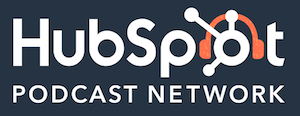
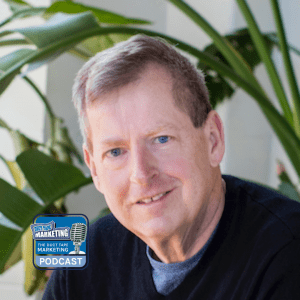 In this episode of the Duct Tape Marketing Podcast, I’m doing a solo show, and I’m gonna talk about something that I’ve been talking a lot about lately called the Customer Success Track.
In this episode of the Duct Tape Marketing Podcast, I’m doing a solo show, and I’m gonna talk about something that I’ve been talking a lot about lately called the Customer Success Track.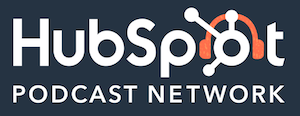
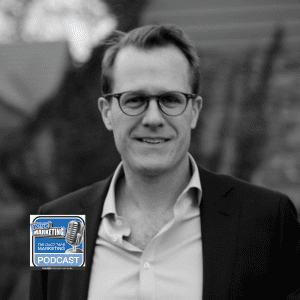 In this episode of the Duct Tape Marketing Podcast, I interview Matt Dixon. Matt is a Founding Partner of DCM Insights, the customer understanding lab. He’s also a frequent contributor to Harvard
In this episode of the Duct Tape Marketing Podcast, I interview Matt Dixon. Matt is a Founding Partner of DCM Insights, the customer understanding lab. He’s also a frequent contributor to Harvard 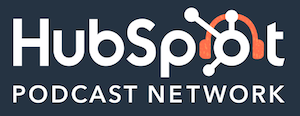
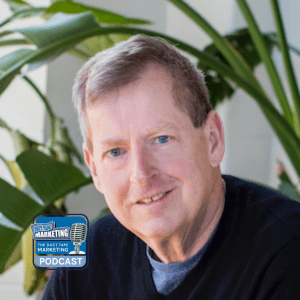 In this episode of the Duct Tape Marketing Podcast, I’m doing a solo show on the 10 essential website elements every homepage needs to have.
In this episode of the Duct Tape Marketing Podcast, I’m doing a solo show on the 10 essential website elements every homepage needs to have.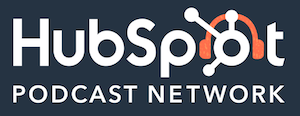
 In this episode of the Duct Tape Marketing Podcast, I interview Richie Norton. Richie
In this episode of the Duct Tape Marketing Podcast, I interview Richie Norton. Richie 
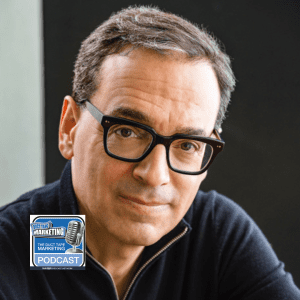 In this episode of the Duct Tape Marketing Podcast, I interview Daniel Pink. Daniel
In this episode of the Duct Tape Marketing Podcast, I interview Daniel Pink. Daniel 
 Do you ever wish there was some way to get all those apps you use at work to talk to each other? Or dreamed about automating routine tasks like following up with marketing leads or cross-posting on social channels—without having to hire a developer to build something for you? Then you’ll love Zapier. Zapier helps marketers make the most of the technology you already use. Connect all your apps, automate routine tasks, and streamline your workflow—so you can convert more, with less chaos. See for yourself why teams at Airtable, Dropbox, HubSpot, Zendesk, and thousands of other companies use Zapier every day to automate their businesses. Try Zapier for free today at zapier.com/DTM.
Do you ever wish there was some way to get all those apps you use at work to talk to each other? Or dreamed about automating routine tasks like following up with marketing leads or cross-posting on social channels—without having to hire a developer to build something for you? Then you’ll love Zapier. Zapier helps marketers make the most of the technology you already use. Connect all your apps, automate routine tasks, and streamline your workflow—so you can convert more, with less chaos. See for yourself why teams at Airtable, Dropbox, HubSpot, Zendesk, and thousands of other companies use Zapier every day to automate their businesses. Try Zapier for free today at zapier.com/DTM.